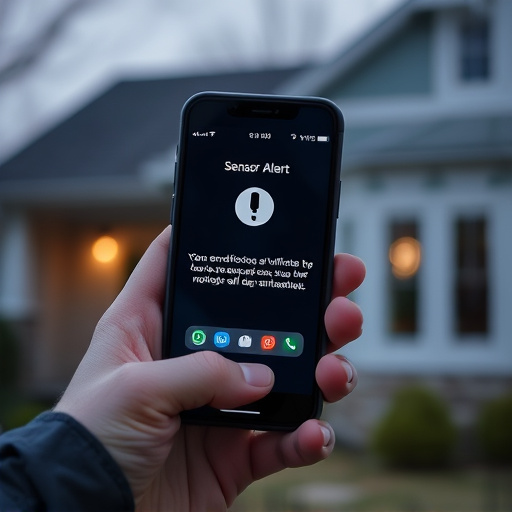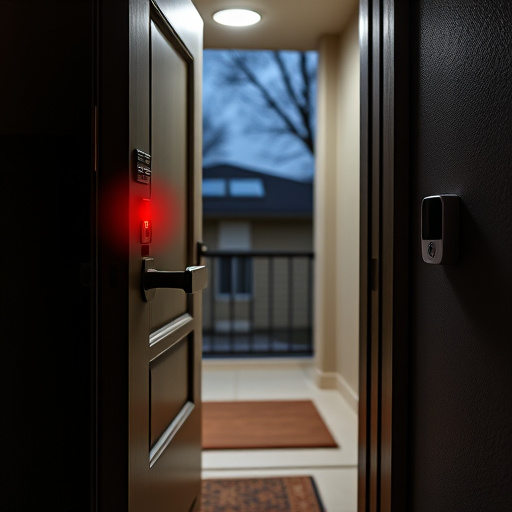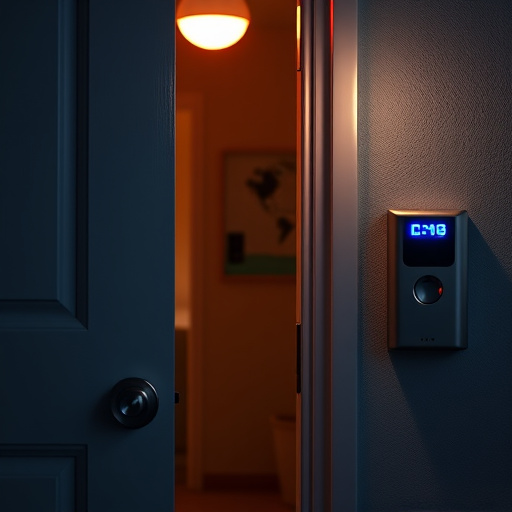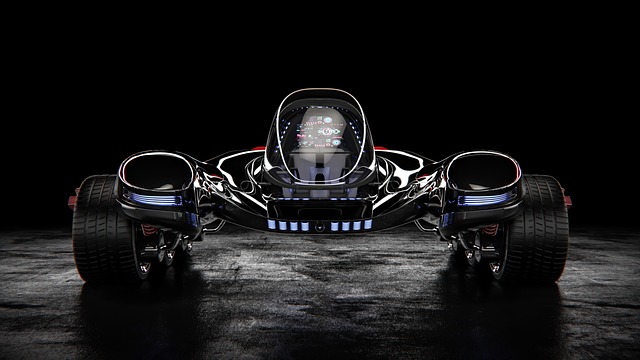The future of personal safety is defined by emerging safety products powered by smart and connected technology, such as wearable trackers with GPS, automatic fall detection, and panic buttons. IoT and AI are driving trends like smart home systems responding to dangers and predictive analytics anticipating risks. These innovations transform daily life protection, enhancing the future of protection gear. Biometric authentication and personalized safety profiles leverage advanced tech for tailored, secure solutions, revolutionizing access control and protection customization. Staying informed about future safety trends is vital to navigate evolving risks in digital environments.
The world of personal safety is undergoing a significant transformation as we move into an era defined by smart, connected devices and cutting-edge technology. This article explores the exciting future of protection gear through six key trends: IoT integration, AI for predictive safety, biometric authentication, eco-friendly designs, AR training, and wearable tech integration with health monitoring. Discover how these emerging safety products leverage safety product technology to shape the next generation of personal safety innovations.
- The Shift Towards Smart and Connected Safety Devices
- – Exploring the integration of IoT (Internet of Things) technology in personal safety gear.
- Artificial Intelligence and Machine Learning for Predictive Safety
- – Discussing AI's role in analyzing patterns to anticipate potential risks and hazards.
- Biometric Authentication and Personalized Safety Profiles
- – How biometric data can enhance access control and tailor safety measures to individual needs.
The Shift Towards Smart and Connected Safety Devices

The future of personal safety is looking increasingly smart and connected as technology continues to advance at a rapid pace. Emerging safety products are no longer just physical barriers or traditional alarms; they are now seamlessly integrated with innovative safety product technology, enabling real-time monitoring and instant alerts. Wearable devices, for instance, have evolved beyond fitness trackers to include sophisticated personal safety features such as GPS tracking, automatic fall detection, and panic buttons that can instantly notify emergency services.
These smart and connected safety devices are revolutionizing the way individuals protect themselves in their daily lives. With the integration of IoT (Internet of Things) and AI (Artificial Intelligence), future safety trends point towards even more advanced personal safety innovations. Smart home systems will become more integrated with wearable technology, allowing for automatic responses to potential dangers, while predictive analytics could anticipate risks before they occur, ensuring a proactive approach to personal safety developments.
– Exploring the integration of IoT (Internet of Things) technology in personal safety gear.
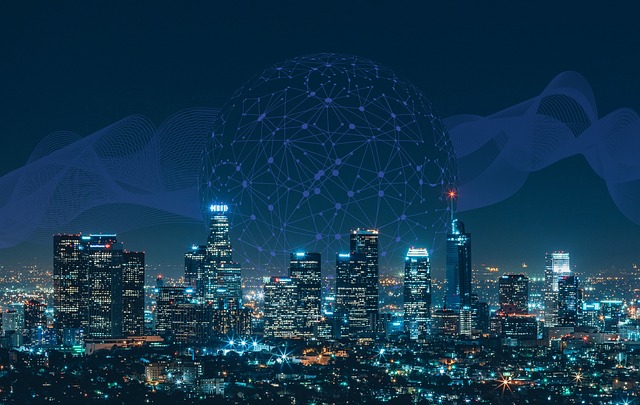
The integration of IoT (Internet of Things) technology is set to redefine personal safety gear and lead to some exciting future safety trends. Emerging safety products are leveraging connected devices and sensors to enhance user protection in unprecedented ways. For instance, smart clothing embedded with sensors can monitor vital signs and detect falls or unusual activity, alerting emergency services promptly. This real-time data sharing revolutionizes personal safety by enabling immediate assistance, especially for vulnerable individuals.
As the world of safety product technology evolves, we can expect more innovative solutions to surface. IoT-enabled devices offer unparalleled connectivity, allowing for remote monitoring, location tracking, and automated alerts. These developments in personal safety innovations promise to make everyday activities safer, particularly for those who engage in outdoor pursuits or have specific health considerations. The future of protection gear looks promising with ongoing advancements that cater to individuals’ well-being.
Artificial Intelligence and Machine Learning for Predictive Safety
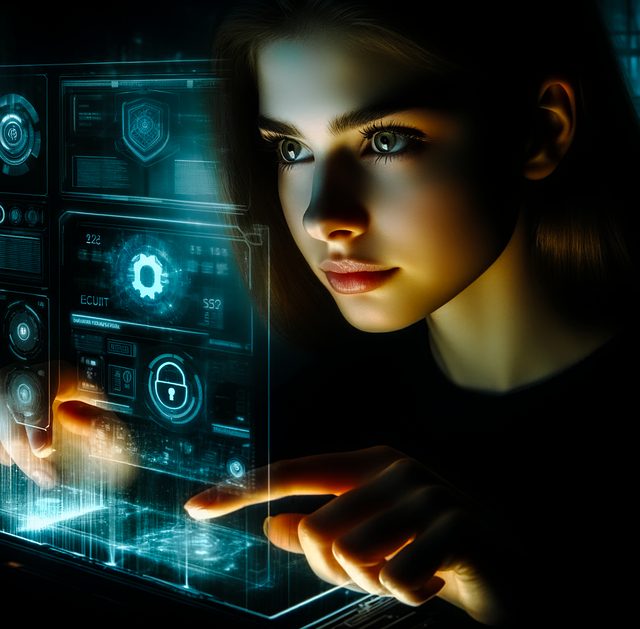
Artificial Intelligence (AI) and Machine Learning (ML) are revolutionizing personal safety by enabling predictive capabilities that were previously unimaginable. These technologies can analyze vast amounts of data, including historical incident reports, environmental sensors, and even social media trends, to identify patterns and anticipate potential hazards. By leveraging AI and ML, future safety trends will move beyond reactive measures to proactive protection. Emerging safety products will be equipped with smart algorithms that can predict and prevent accidents before they occur.
The integration of AI technology into personal safety innovations is driving the development of advanced protective gear. Wearable devices, for instance, are becoming increasingly sophisticated, incorporating sensors and connected systems that monitor vital signs and environmental factors in real-time. These wearables can then use ML algorithms to detect anomalies and alert users or authorities when risks are identified. This not only enhances individual safety but also contributes to broader public safety developments, transforming the future of protection gear into a dynamic, data-driven ecosystem.
– Discussing AI's role in analyzing patterns to anticipate potential risks and hazards.

The integration of Artificial Intelligence (AI) is set to redefine personal safety product trends in the future. AI algorithms can analyze vast datasets, including historical incidents and real-time data feeds, to identify patterns and predict potential risks and hazards. By learning from past events and continuous updates, these systems can anticipate emerging threats, enabling proactive measures. This technology enhances existing safety product technologies by providing a layered approach, where predictive analytics complement traditional risk assessment methods.
This advancement in AI drives the development of emerging safety products that go beyond basic protection gear. Personal safety innovations powered by AI offer tailored solutions, adapting to individual needs and environmental conditions. From smart clothing with built-in sensors detecting hazardous situations to AI-guarded smart homes, these developments signal a future where protection gear becomes increasingly sophisticated and responsive, ensuring individuals are equipped to navigate an ever-changing landscape of potential risks.
Biometric Authentication and Personalized Safety Profiles

Biometric Authentication and Personalized Safety Profiles are at the forefront of the future safety trends in personal safety product innovations. This emerging safety product technology allows for a more tailored and secure approach to protection gear, leveraging unique biological identifiers like fingerprints, facial recognition, or iris scans to verify identity. As personal safety developments continue to evolve, biometric authentication ensures that only authorized individuals can access specific safety features, enhancing overall security.
Personalized Safety Profiles further revolutionize the way individuals interact with their safety equipment. By combining advanced analytics and machine learning, these profiles adapt to each user’s unique needs and behaviors, offering customized alerts and responses. This not only improves efficiency but also ensures that everyone receives the most relevant and timely protection, making it a game-changer in the realm of personal safety innovations.
– How biometric data can enhance access control and tailor safety measures to individual needs.

Biometric data is poised to revolutionize personal safety by transforming access control measures and enabling a new level of tailored protection. By leveraging unique biological identifiers like fingerprints, facial recognition, or iris scans, emerging safety products can offer more precise and personalized security solutions. This technology allows for highly customized safety developments, adapting protective gear and procedures to meet the distinct needs of each individual. For instance, smart access control systems can grant or deny entry based on verified biometric data, ensuring that only authorized personnel enter restricted areas.
The integration of biometric data into personal safety innovations opens doors to enhanced security in various settings, from homes and offices to public spaces. This future safety trend promises improved convenience while significantly boosting protection. As the world advances towards more digital and interconnected environments, safety product technology will continue to evolve, making it crucial for individuals to stay informed about these emerging trends, ensuring they remain ahead of potential risks and vulnerabilities.

